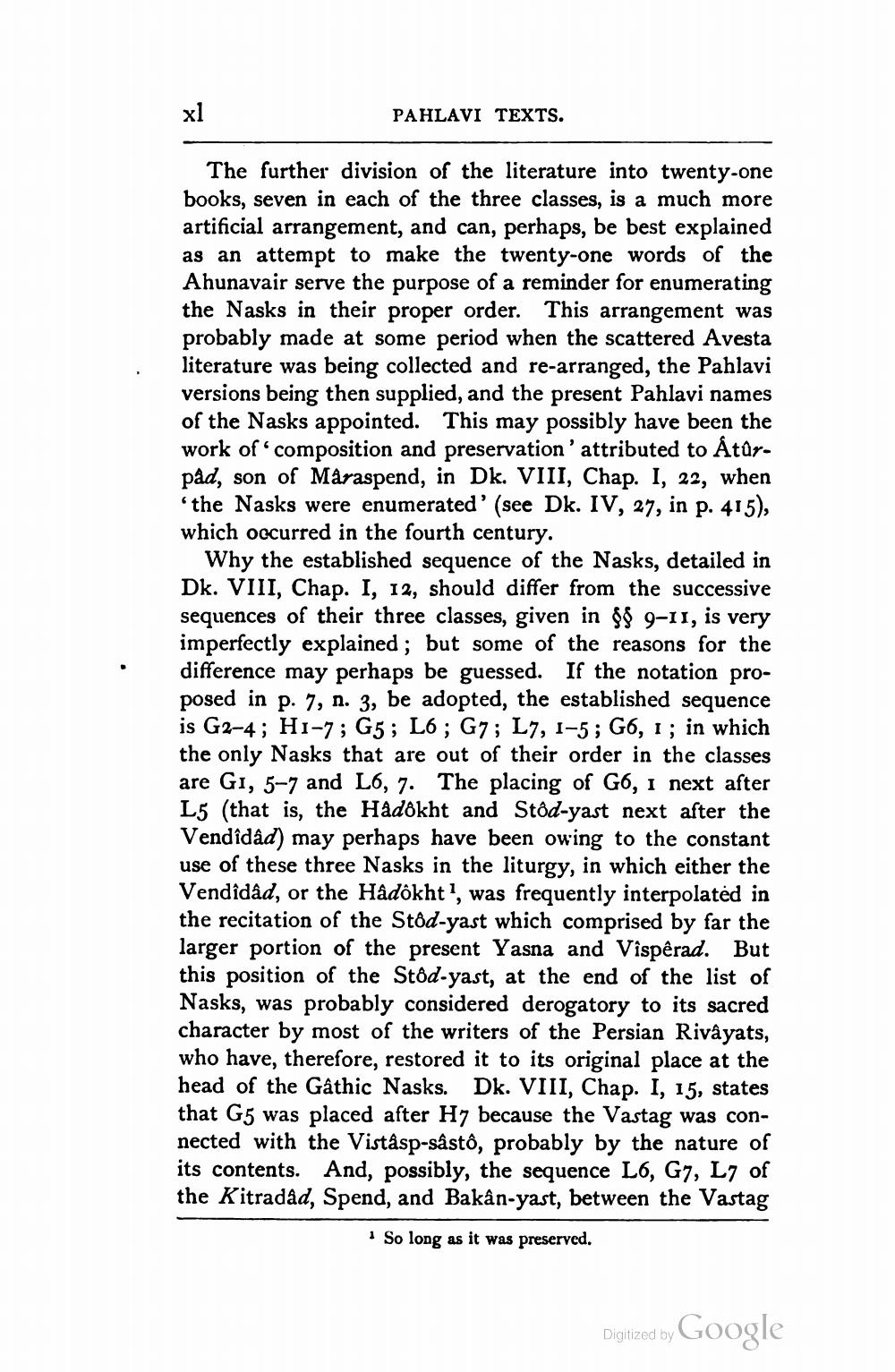________________
x2
PAHLAVI TEXTS.
The further division of the literature into twenty-one books, seven in each of the three classes, is a much more artificial arrangement, and can, perhaps, be best explained as an attempt to make the twenty-one words of the Ahunavair serve the purpose of a reminder for enumerating the Nasks in their proper order. This arrangement was probably made at some period when the scattered Avesta literature was being collected and re-arranged, the Pahlavi versions being then supplied, and the present Pahlavi names of the Nasks appointed. This may possibly have been the work of composition and preservation' attributed to Atûrpåd, son of Maraspend, in Dk. VIII, Chap. I, 22, when
the Nasks were enumerated' (see Dk. IV, 27, in p. 415), which occurred in the fourth century.
Why the established sequence of the Nasks, detailed in Dk. VIII, Chap. I, 12, should differ from the successive sequences of their three classes, given in $$ 9-11, is very imperfectly explained; but some of the reasons for the difference may perhaps be guessed. If the notation proposed in p. 7, n. 3, be adopted, the established sequence is G2-4; H1-7; 65; L6; G7; L7, 1-5; G6, 1; in which the only Nasks that are out of their order in the classes are G1, 5-7 and L6, 7. The placing of G6, 1 next after L5 (that is, the Hadokht and Stôd-yast next after the Vendidad) may perhaps have been owing to the constant use of these three Nasks in the liturgy, in which either the Vendîdâd, or the Hâdôkht!, was frequently interpolated in the recitation of the Stôd-yast which comprised by far the larger portion of the present Yasna and Vispêrad. But this position of the Stod-yast, at the end of the list of Nasks, was probably considered derogatory to its sacred character by most of the writers of the Persian Rivâyats, who have, therefore, restored it to its original place at the head of the Gathic Nasks. Dk. VIII, Chap. I, 15, states that G5 was placed after H7 because the Vastag was connected with the Viståsp-såsto, probably by the nature of its contents. And, possibly, the sequence L6, G7, L7 of the Kitradâd, Spend, and Bakân-yast, between the Vastag
· So long as it was preserved.
Digitized by Google




